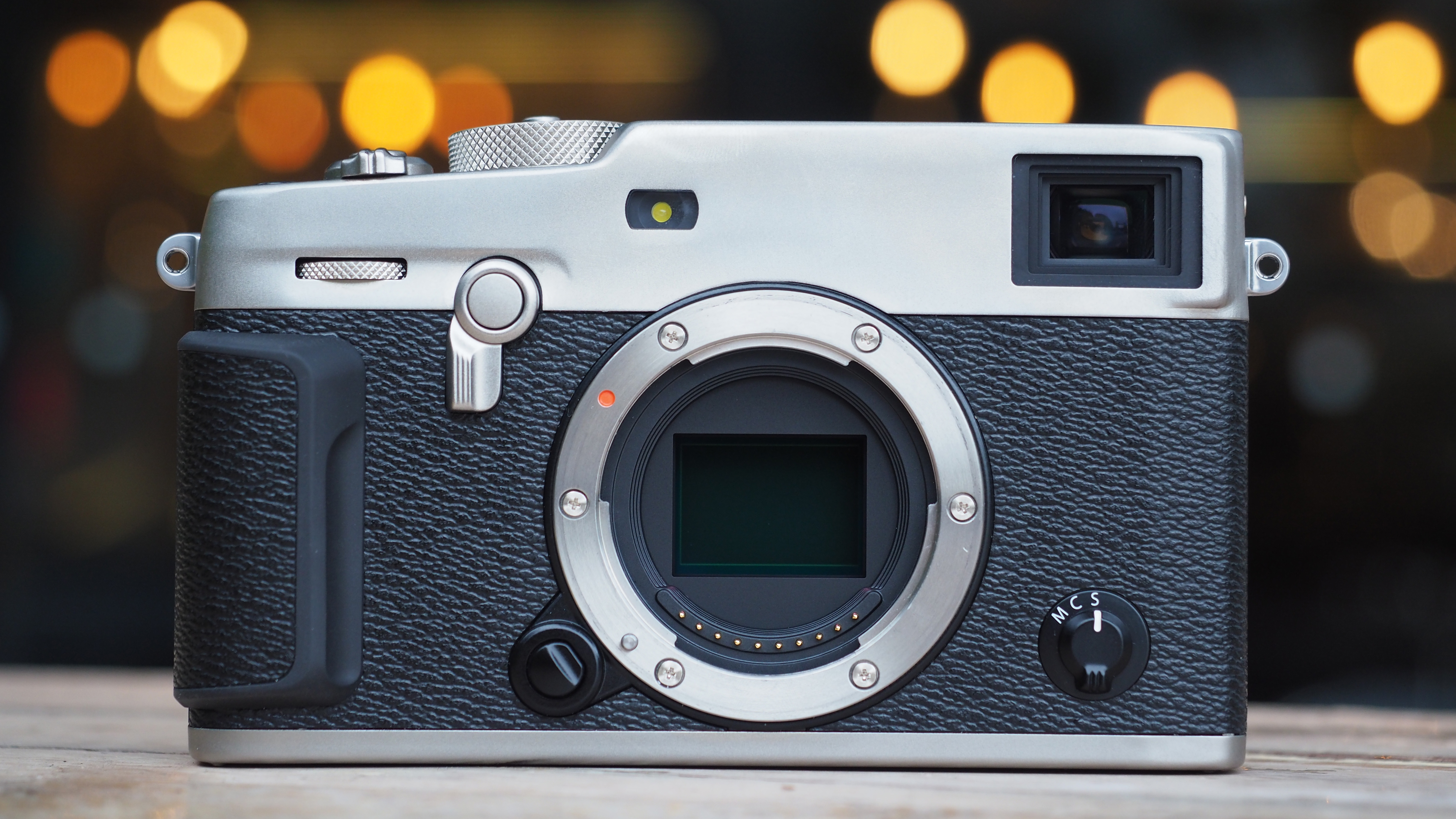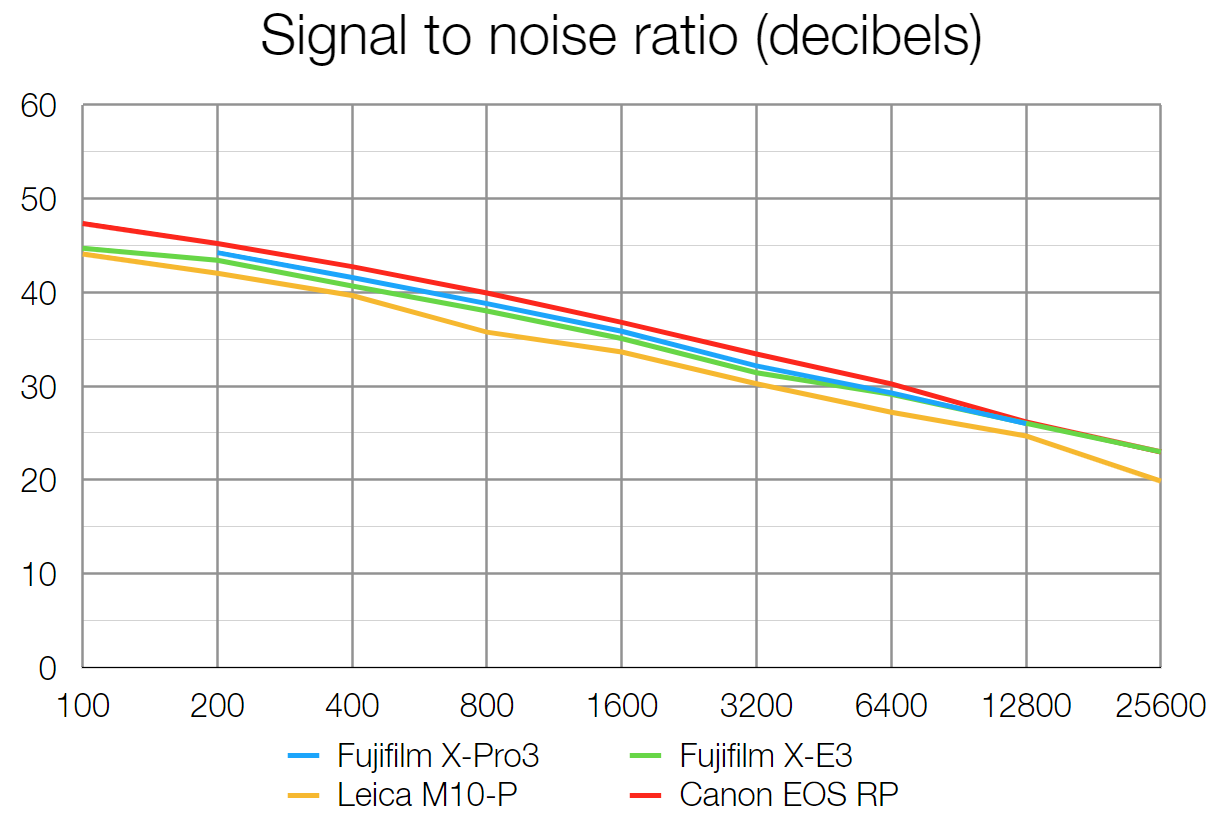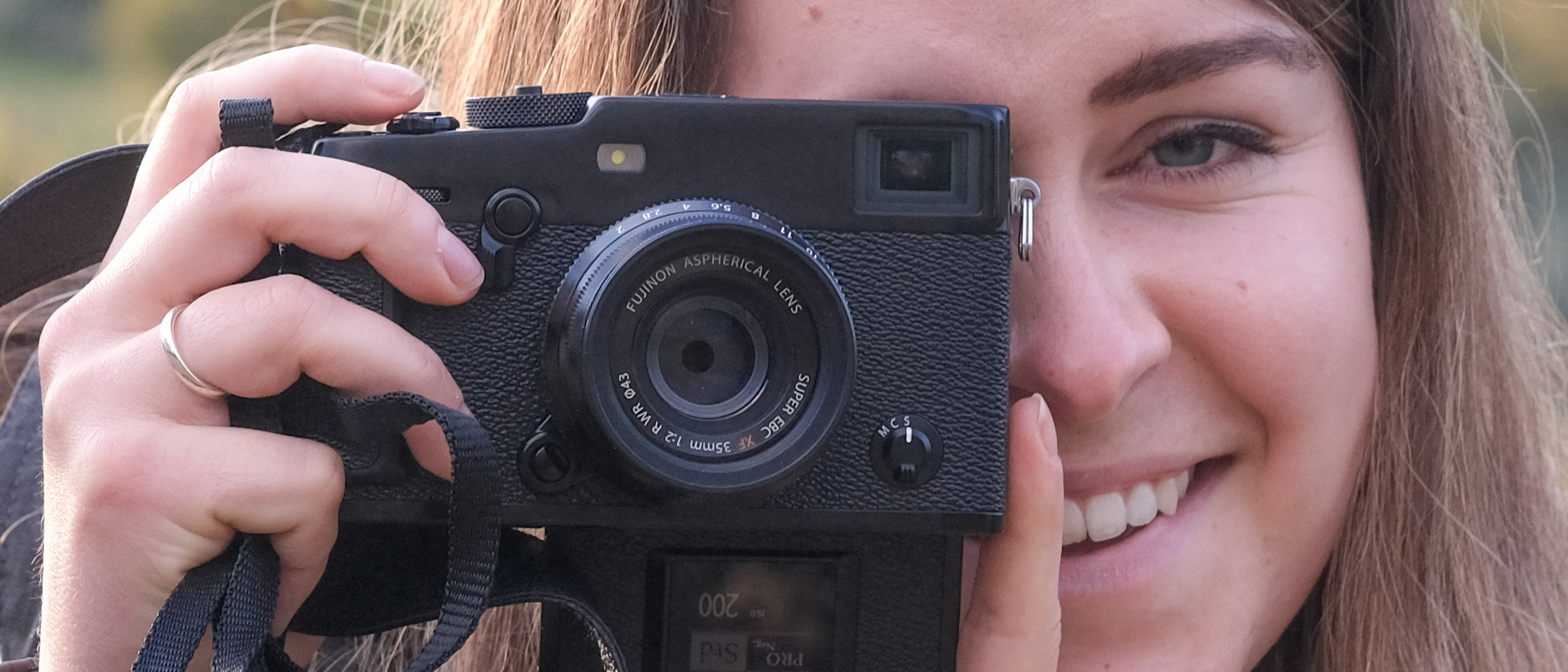Digital Camera World Verdict
The Fujifilm X-Pro3 set out with a mission: to keep photographers shooting, rather than chimping (checking your photos as you shoot them). The camera's "hidden LCD" achieves this aim, forcing you to reconsider how you approach your shots, and captures the purity and joy of taking photographs. However, by challenging you to shoot in a traditional way, at times it impedes your ability to shoot in a modern one.
Pros
- +
Hidden LCD will stop you chimping…
- +
Beautiful Fujifilm IQ and color rendition
- +
Stylish yet seriously resilient body…
Cons
- -
Rangefinder design takes getting used to
- -
4K video record time is limited
- -
Expensive
Why you can trust Digital Camera World
You have to admire Fujifilm's daring and willingness to try something new. When reports of the Fujifilm X-Pro3's then-unnamed "hidden LCD" first hit the rumor sites, it seemed so bizarre that many people dismissed it out of hand as too outlandish to be true. However, it is true – and it's borderline brilliant in its thinking.
The Fujifilm X-Pro 3 has its LCD on 'backwards', so that the screen faces inwards instead of out. The result is that there is no temptation to compose on the back screen, and the hassle of flipping the LCD down between each shot makes you far less inclined to stop and examine every picture you take – the 'ooh ooh ooh' chimpanzee sound!
Whether or not you think it's one of the best Fujifilm cameras depends on your thinking – whether you value design, or whether you value, well, value. It does, of course, take all the X-mount Fujifilm lenses, so you could easily use it alongside a more conventional camera like the Fujifilm X-T3.
Fujifilm's new camera has succeeded in its aim of encouraging photographers to shoot pictures instead of look at them. It embodies a purity of shooting that truly puts you – and keeps you – in the moment, with a mindset fully focused on capturing what's in front of you rather than constantly checking what you just did. By making it harder for you to check your pictures, it makes it easier to concentrate on the act of 'seeing' them in the first place.
The design and handling is based on old 'rangefinder' cameras with rectangular bodies and optical direct vision viewfinders in the corner – that are aligned with the lens but don't show the view through it.
However, this consequently presents a steep learning curve for anyone who isn't familiar with using a rangefinder style camera. Although Fujifilm's hybrid optical/electronic viewfinder does enable you to switch to a digital display too (and check your photos, if you must).
You can view photos you've taken on the rear screen but only if you open it out and fold it down. The thing is, by inherently challenging you to shoot in more 'pure' way, the camera can impede your inclination to use the tilting screen in situations that actually benefit from it…
The best camera deals, reviews, product advice, and unmissable photography news, direct to your inbox!

Specifications
Sensor: 26.1MP APS-C X-Trans CMOS 4
Image processor: X-Processor 4
AF points: 91 Intelligent Hybrid (contrast and phase detection)
ISO range: 80-51,200 (extended)
Max image size: 6,240 x 4,160
Metering modes: Multi, spot, average, center weighted
Video: 4K up to 30fps (15 mins), 1080p up to 60fps (59 mins) / 120fps (6 mins)
Viewfinder: Hybrid OVF (95% cov, x0.52 mag) and OLED EVF (100% cov, x0.66 mag, 3.69m dots)
Memory card: 2x SD/SDHC/SDXC (UHS II)
Max burst: 11fps mechanical shutter, 20fps electronic (30fps with crop)
Connectivity: Wi-Fi, Bluetooth, USB-C
Size: 140.5 x 82.8 x 46.1mm
Weight: 497g (including battery and memory card)
Key features
As noted, the key feature of the Fujifilm X-Pro3 is its "hidden LCD", envisioned to encourage shooters to return to a philosophy of "pure photography". In many ways this is the obvious extension of the hybrid viewfinder – the key feature introduced by the Fujifilm X100 and carried over to the X-Pro line.
It's Fujifilm's way of intentionally obfuscating the act of shooting digitally, first by making the default option an optical viewfinder (which you can switch to an electronic one) and now by making the default experience a screenless one. In effect, if you pick up and use this camera as intended, you get an analog experience – except that your files are captured on a memory card instead of film.
Interestingly the fold-down screen is great for composing street photography inconspicuously – giving you an effective waist-level viewfinder, like those found on old film cameras.
This is carried through in Fujifilm's unique control layout, with aperture being a manual ring consigned to the lens and a dedicated ISO dial on the top mount. It's grudgingly digital, and the company would clearly rather you shot "properly" the way photographers did on old film cameras.

Inside, the camera uses the familiar 26.1MP X-Trans 4 / X-Processor 4 combo that debuted in the Fujifilm X-T3, but on the outside is something very much new. The body itself remains magnesium, but the top and bottom plates are titanium – and the DR Black and DR Silver models also feature Duratect coating, which is ten times as scratch-resistant as titanium.
The X-Pro3 now focuses down to an impressive -6EV, and features in-camera HDR as well as Focus Bracketing (with a clever auto-calculation feature, to determine how many shots are required) – both at the behest of user feedback.
And no new Fujifilm flagship would be complete without a new film simulation – here we get Classic Negative, which gives the feel of everyday film such as Superia 100, with hard tonality and low saturation.
Build and handling
If you've used a Fujifilm X-Pro camera before, you'll know exactly what to expect and you'll feel right at home. The X-Pro3 looks great and feels even better in the hand, giving you sure and precise control with pleasingly tactile dials that just beg to be fiddled with.
Even the regular non-DR body is supremely solidly constructed, feeling like you could hurl it down a bowling alley and knock down ten pins before happily resuming shooting, but the extra Duratect coating takes the build quality to another level. Fujifilm showed us footage of a tester attacking the camera with a Stanley knife and it came away without a scratch, although we didn't dare try that with our sample.
The one downside with the DR coatings, however, is that they are very prone to fingerprints. In much the same way as old brass cameras would pick up smears, so do the Duractect-protected X-Pro3s – while some will see it as a small price to pay for the extra durability, we can't imagine that anyone who buys a Fujifilm camera will be happy at seeing its glorious exterior besmirched by smudges.
We only gave it a test run in a mild spot of rain, but we're assured that the reliable 70-point weather sealing will keep you shooting rain or shine down to -10°C / 14°F (when paired with weather-sealed optics, obviously).

Performance
As noted in the previous section, "If you've used a Fujifilm X-Pro camera before, you'll know exactly what to expect and you'll feel right at home…" However, if you've never used a Fujifilm camera – let alone an X-Pro – then it will all feel very, very alien!
By now most photographers are aware at just how unique these cameras are, but we've had interactions with a couple of shooters lately who made the switch from other camera systems and felt unprepared for just how big a change it is to shoot on Fujifilm systems.
It's nothing that a few hours of shooting won't sort out, but you certainly shouldn't expect to pick one of these up for the first time and shoot a wedding (which you could conceivably do on most other camera systems).
The performance of the X-Pro3 can't be faulted; it produces beautiful images with rich, wonderful color rendition that look beautiful straight out of camera, but have plenty of wiggle room for post-processing work. Though we do find that Fujifilm files are quite dense on the blacks, which we actually love, but it's an exposure consideration of you like to pull a lot of detail out of the shadows as the handling is a little different to usual CaNikon images.
The 4K footage is crisp and clean, although it's a shame that recordings are limited to 15 minutes – and the lack of in-body image stabilization means that a tripod or gimbal is pretty much a must, making this less appropriate as a run-and-gun video or vlogging device (though that's really not what this camera is intended for).
No, the performance of the X-Pro3 will come as little surprise; the practice, however, is another matter. Used as intended, this camera is as close as you can get to shooting analog without feeding a roll of Portra in the back of a body. And that is indeed a beautiful experience; to be free of the urge to constantly check the back screen after every shot, and to feel the thrill of shooting on a rangefinder using an optical finder, is genuinely liberating.

Yes, the digital assists are there, but Fujifilm has done everything in its power to hide them from you. Using the EVF requires flicking a switch, looking at the LCD screen requires flipping it down – and there is almost a feeling of defeat, that you've somehow failed, if you choose to do so when shooting.
Clearly this isn't a camera designed for newcomers, but it does engage a certain feeling of elitism – that the only 'proper' way to use it is with the assists disabled. On the one hand, this does encourage you to get truly lost in the moment of shooting; on the other, though, it also discourages you from doing things like flipping down the screen to shoot at a low angle, where such facility is genuinely useful.
The result is often wonderful; that you go out shooting for the purity of shooting, and you enjoy the process and come home with great photographs. However, it also has the potential for pain; there's a risk that it will make you miss potentially magic moments because you were trying to shoot 'properly', instead of using 21st Century tools that are designed to make photography more practical and productive.
Lab tests
Premium rangefinder-style cameras are a rarity in the digital camera world (the actual world, not just this website). We've selected the Leica M10-P and Fujifilm X-E3 as comparison cameras with which you can judge the X-Pro3's performance in our lab tests. Both sport the rangefinder look and feel, with the Leica being much more expensive than the X-Pro3 and the 'real thing', and the X-E3 substantially cheaper and smaller but with the rangefinder 'look'. Alternatively, if you can forgo the X-Pro's style, you could join the full-frame club with the Canon EOS RP, and it'd actually cost you less than the X-Pro3.

Signal to noise ratio
Our signal to noise test measures image clarity, specifically the ratio of the actual image 'data' you want to capture, versus the image noise that you don't want, but will inevitably be visible when shooting at higher ISO sensitivities. The higher the score at a given ISO sensitivity, the better.
Here the X-Pro3 scores very well, almost matching the full-frame Canon EOS RP. However, the far cheaper Fujifilm X-E3 scores very nearly as high as the X-Pro3, despite its X-Trans sensor being a generation older. Conversely, the far pricier Leica M10-P trails the pack, albeit not by much.

Dynamic range
When it comes to dynamic range, Fujifilm is the brand to beat, with the X-Pro3 and X-E3 level-pegging throughout most of the sensitivity scale. The M10-P stays with them at lower sensitivities, but its dynamic range is hit much more noticeably as the ISOs increase. The EOS RP is consistently around 1-stop of dynamic range down on both Fujifilm cameras at all sensitivities.

Resolution
With all the cameras in the 24-26MP resolution range, it's small wonder they score almost identically in our resolution test. The M10-P is absent here due to its supplied lens not being able to focus close enough to correctly frame our test chart.

Verdict
We loved our time shooting on the Fujifilm X-Pro3. In a world of modern digital photography, where most cameras feel and behave exactly the same, this is a body that is truly unique and actively challenges you to approach your craft in new (well, old) ways.
Should you choose to use this camera with all the mod cons – the electronic viewfinder with the back screen flipped down – you will have a sure and reliable shooting experience, but you will undoubtedly miss the magic that it offers (and much of the reason for the X-Pro3's existence).
Should you choose to use it as Fujifilm intends – with the "hidden LCD" firmly folded away and the hybrid viewfinder set to optical – you will have a pure and potentially profound shooting experience, but you will undoubtedly miss the mark on an image or two that you would otherwise have nailed.
Where most cameras are simply there to record photos, the X-Pro3 is about the whole experience of using unique photographic took to see and capture images. It's not a Leica, but it has something of the Leica philosophy, where it's not about the money, it's about the quality of the experience.
But as much as we really do love what the X-Pro3 is trying to do, there remains a very cynical part inside us; you can, after all, get this very same experience by using a DSLR with a fully articulating screen (anything from a Canon EOS 600D to a 6D Mark II) and just flipping the LCD around so you can't see it, shooting solely through the optical viewfinder…
Read more:
The best Fujifilm cameras in 2019
Fujifilm X-T3 review

James has 25 years experience as a journalist, serving as the head of Digital Camera World for 7 of them. He started working in the photography industry in 2014, product testing and shooting ad campaigns for Olympus, as well as clients like Aston Martin Racing, Elinchrom and L'Oréal. An Olympus / OM System, Canon and Hasselblad shooter, he has a wealth of knowledge on cameras of all makes – and he loves instant cameras, too.







